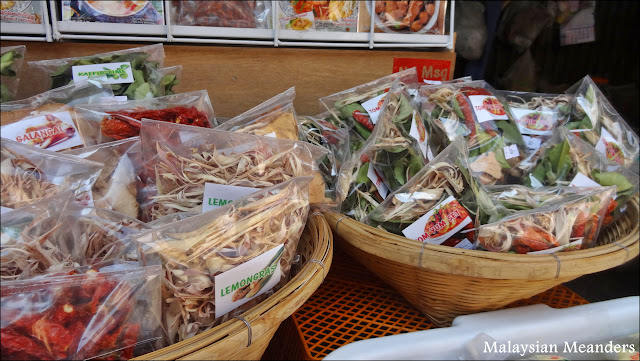"I don't want to eat it" are words a parent dislikes hearing at the dinner table. Taking your child who is a picky eater to a foreign country with unfamiliar cuisine is probably one of the concerns for traveling parents. But this isn't one of those blog posts packed with
tips for eating globally with your kids. What if your meal suddenly causes you to reevaluate how you view your own self?
"I don't want to eat it." That's all I could think as I gazed down at my plate.
It was my own fault I was in this situation. After a long day of sightseeing in Tokyo, I dragged my family of picky eaters to a yakitori restaurant. Yakitori is grilled, skewered chicken. What could possibly go wrong with that? I hungrily waited for them to bring out our food and watched them set down the platter in the middle of the table.
 |
| Almost everything on this yakitori plate looks yummy. |
Neat skewers circled the plate. Succulent thigh meat, tasty white meat, chicken wings, and — wait a minute... what's that — chicken innards. Lying innocuously among the morsels that would probably suit my family just fine without complaint was a single skewer with a chicken heart, liver and gizzard. In general, I like a wide variety of foods and consider myself an adventurous eater. But I find offal just awful. (Sorry, couldn't help myself with that pun.) I can take my chicken liver in pâté form, and I've been known to enjoy a deep fried gizzard, but this slender spear didn't look at all appetizing to me. I knew that if anyone else got it, that'd be the end of the meal for them. So, like any good mama taking a bullet for the kids, I grabbed it.
"Eat it," I told myself.
Suddenly, it was as if every single argument my kids had ever given me over food came flooding back to me. All the points I've ever countered with came back, too. My psyche split in half and began a heated debate with each other.
"But I don't like it."
"How do you know you won't like it?
"Because I didn't like it the last time I tried it."
"Well, try it again. It's been a while. You might like it now."
"No, I really don't want to eat it. "
"Sometimes, it takes trying something 20 times before you start to like it."
"No way am I trying this offal stuff 20 times!"
*************************
Traveling in a foreign country brings out a childlike sense of wonder in me as I gaze at unfamiliar surroundings. Not knowing the language, I'm reminded of my early days before I learned to read. I gain a better appreciation of the huge knowledge leaps we constantly ask of our young kids. Apparently, international travel also brings out the rebellious child in me, too.
After moving to Malaysia, we encountered tons of unfamiliar meals when dining out. As the foodie risk taker in the family, I was charged with the task of tasting dishes, identifying what was in it, and then predicting whether it fell within my family's preferences.
My husband once summed up the differences in our reactions to strange culinary offerings. I'm afraid that if I don't try it, I'll miss out on something good. His assumption, on the other hand, is that it's probably something bad, and it's better to be safe than sorry.
Sometimes, my willingness to try new foods gets me into trouble. I vividly remember my first taste of sushi. It was a California Roll, a rather safe initiation into the world of sushi eating. I took a few bites before the food allergies kicked in. My throat began to close up, and my ear canals itched like crazy. I had to stop eating. My reaction didn't reach the level of requiring an EpiPen, but it's always in the back of my mind when we eat at Japanese restaurants.
Perhaps I'm a pickier eater than I thought and just didn't know it. As the Queen of the Household, I'm the one who sets the menu at home, does the grocery shopping and cooks the meals. When I flip through recipes, I bypass the ones that don't interest me and pull out the ones that seem tasty. Basically, I'm never in the situation that I constantly put my kids in. You get what you get, and you don't throw a fit.
My sense of self was beginning to break apart. Am I really who I think I am? Is this the heart-thumping dread my kids feel each time I glibly tell them, "Don't be so picky"?
What if I'm not as adventurous palate-wise as I consider myself to be? How else can I explain why I've always declined my dad's offer of
balut, a Filipino delicacy of partially developed duck embryo boiled in the shell, cracked open and swallowed whole. There's something about the tiny beak, semi-formed eyes and miniature, claw feet pressing up against the yolk sack that really turns me off.
Do you push your food boundaries when you travel abroad? Would you fancy a glass of
horse milk the next time you're in Paris? Could you match Andrew Zimmerman with his
"beating frog heart moments" on
Bizarre Foods?
*************************
It was time for me to take my own motherly advice. Time to stop throwing my silent, mental tantrum.
I slowly took a bite of the heart. Chewy. Gross. Disgusting. Can't spit it out, certainly not in front of the kids. Swallowing it, I pulled my best Meryl Streep, smiled at the kids, and remarked, "Delicious!"
Related Posts:
Japanese Vending Machines
A Lost Tooth, Black Eggs and Japan's Hakone National Park
Epic Day at Tokyo Disney
This post is part of Travel Photo Thursday on Budget Travelers Sandbox. Check it out for more around-the-world travel inspiration.























































